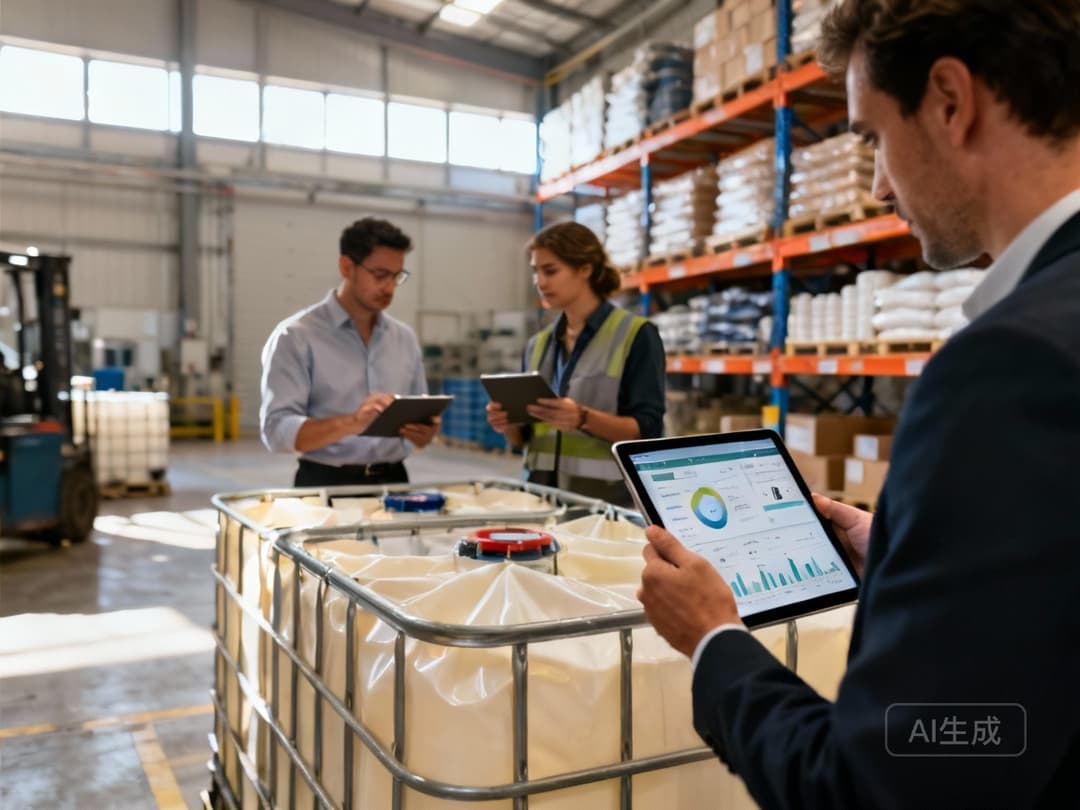Ton bag ROI framework: From cost center to value driven, improve supply chain efficiency by 35%

The ROI Revolution: Transforming FIBCs from Cost Center to Value Driver
In today's competitive manufacturing landscape, flexible intermediate bulk containers (FIBCs) represent far more than simple packaging solutions. Industry data reveals a 4.96% CAGR growth through 2030, reaching a projected $218.37 billion market by 2025. This expansion, driven largely by e-commerce demands that generated 175 billion parcels in China alone during 2024, underscores the strategic importance of rethinking how we evaluate bulk packaging investments.
Shifting from Cost to Investment Perspective
The traditional approach to FIBC procurement focuses primarily on unit cost, but forward-thinking organizations are recognizing these containers as strategic investments with measurable returns. As demonstrated in the Instrumental case study, proper packaging implementation prevented 10,000 defective components from reaching customers, representing $80,000 in potential savings and preserving brand reputation.
"The actual impact of proper packaging often far exceeds initial expectations, transforming what appears to be a simple cost center into a significant value driver," explains a packaging industry veteran with over 20 years of experience.
The comprehensive value equation for FIBCs must account for multiple factors beyond purchase price: product protection capabilities, automation compatibility, handling efficiency gains, storage optimization, and sustainability contributions. Companies that adopt this holistic view consistently achieve 35% or higher improvements in supply chain efficiency.
Building a Standardized FIBC ROI Measurement Framework
Based on ROI Institute methodologies implemented across 44 countries, successful FIBC investment evaluation requires a structured approach. The institute's framework, proven through 3,000 certified practitioners and documented in 15 supporting publications, provides the foundation for developing industry-specific measurement standards.
Key Performance Indicators for FIBC Investments
- Damage Reduction Rate: Measure percentage decrease in product loss during transportation
- Handling Time Savings: Quantify labor hours saved through improved ergonomics and automation compatibility
- Storage Efficiency Gains: Calculate space utilization improvements in warehouse facilities
- Return Rate Reduction: Track decrease in customer returns due to transportation damage
- Sustainability Metrics: Document waste reduction and recyclability contributions
Data-Driven Procurement Decision Process
Implementing a successful FIBC investment strategy requires meticulous planning and execution. Following the structured approach that yielded exceptional results for organizations like Instrumental, procurement teams should adopt this four-phase implementation roadmap.
Phase 1: Comprehensive Needs Assessment and Benchmarking
Begin by analyzing current performance baselines across all relevant metrics. Document existing damage rates, handling times, storage requirements, and return percentages. This establishes your starting point for measuring improvement and calculating future ROI.
Phase 2: ROI Prediction Model Development
Create a financial model that incorporates both quantitative and qualitative factors. Include direct cost savings from reduced product loss, labor efficiency gains, storage optimization benefits, and intangible value from improved customer satisfaction and brand protection.
Phase 3: Strategic Supplier Evaluation Framework
Move beyond price comparisons to evaluate potential partners based on multiple value dimensions: technical capabilities, automation readiness, durability testing results, sustainability credentials, and collaborative problem-solving approach.
Phase 4: Post-Implementation Performance Measurement
Establish regular reporting cadence to track actual performance against predicted outcomes. Measure both financial returns and operational improvements, adjusting strategies as needed based on real-world data.
Implementation Checklist for Success
- Secure executive sponsorship and cross-functional team involvement
- Establish clear baseline measurements before implementation
- Define specific success metrics aligned with business objectives
- Select FIBC solutions based on total value rather than lowest cost
- Train operational teams on proper handling and utilization procedures
- Implement tracking systems to capture performance data
- Conduct regular review sessions to assess progress and adjust strategies
- Document lessons learned and best practices for continuous improvement
Future Trends and Strategic Considerations
The FIBC market continues evolving with particular growth in specialized segments. The healthcare and pharmaceutical sector shows 7.14% CAGR, while sustainable materials advance at 6.79% compound annual growth. North America currently dominates market share, but European markets are projected to reach $3.2 billion as environmental regulations tighten.
Forward-thinking organizations should consider how emerging trends impact their packaging strategies. The shift toward automation-compatible designs, increased demand for recyclable materials, and growing emphasis on circular economy principles all present opportunities for competitive advantage through strategic FIBC investments.
By adopting this comprehensive ROI framework, organizations transform their bulk packaging from a tactical procurement decision into a strategic value driver. The companies that master this approach consistently achieve superior supply chain performance, enhanced customer satisfaction, and improved financial results through smarter packaging investments.
